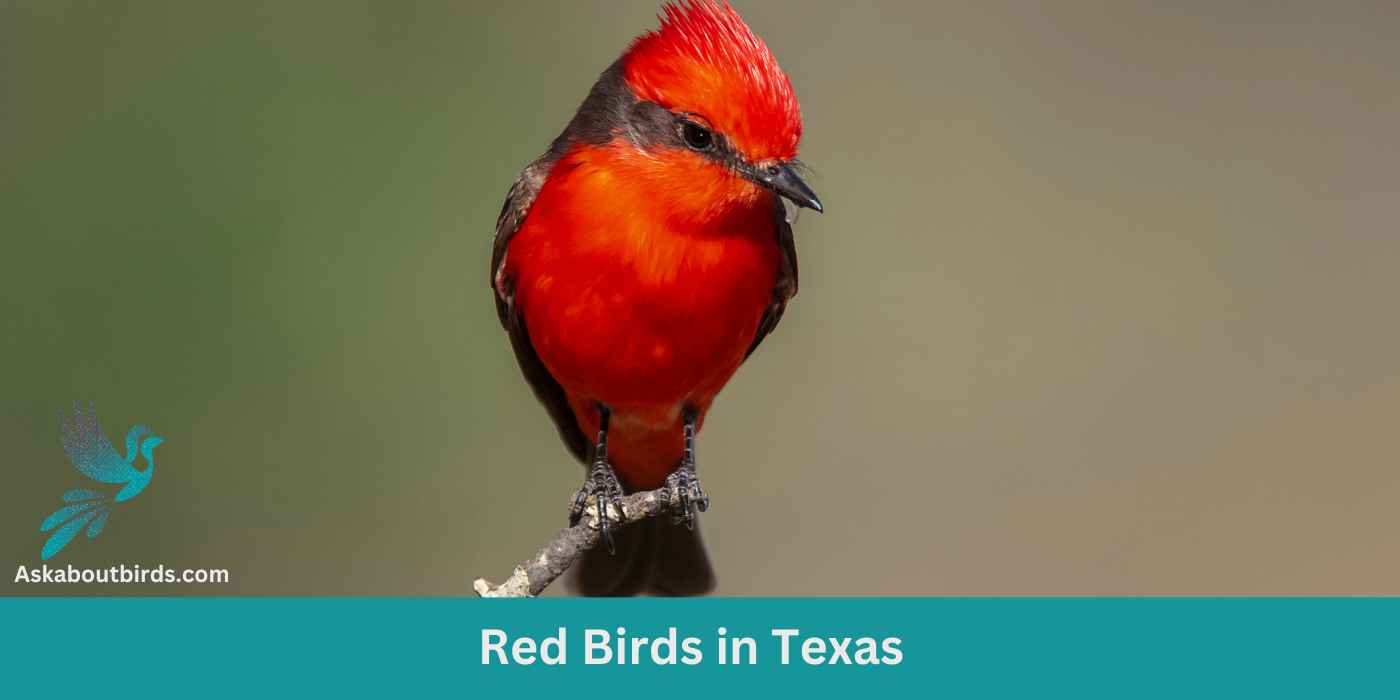Everything’s bigger in Texas, including its avian diversity. From bustling cities to the vast stretches of wild landscapes, Texas is home to a myriad of bird species that grace its skies with a riot of colors. Among these, the red birds stand out, painting a vivid tapestry against the state’s blue expanse.
Dive into our guide to explore 14 of these fiery-feathered wonders and enhance your bird-watching journey with our exclusive free photo guide.
Red Birds Found In Texas
Bounded by both the Gulf Coast and the expansive stretches of the Chihuahuan Desert, Texas is a geographical marvel with a range that spans multiple ecosystems.
These varying terrains offer a rich tapestry of habitats for a multitude of avian species. Its strategic location along numerous migratory routes also makes it a hotspot for birding, especially during migration seasons.
The state’s myriad water bodies, ranging from the Rio Grande to myriad lakes and wetlands, provide crucial stopover points for waterfowl and other bird species.
Northern Cardinal


| Feature | Measurement |
|---|---|
| Scientific Name | Cardinalis cardinalis |
| Length | 8.3 – 9.1 in |
| Wingspan | 9.8 – 12.2 in |
| Weight | 1.19 – 2.29 oz |
The Northern Cardinal is an iconic North American bird, easily recognized by its vibrant color and melodious song.
Appearance: Male Northern Cardinals are a brilliant scarlet red, while females display a more subdued reddish olive. Both sexes have a distinctive black ‘mask’ on their face around the bill and a pointed crest on their head. The bird’s beak is robust, cone-shaped, and bright orange in color.
Diet: Northern Cardinals are primarily granivorous, with a diet largely consisting of seeds and grains. They also eat fruits and insects. These birds typically feed off the ground and are frequent visitors to bird feeders.
Reproduction: Northern Cardinals are monogamous, and a pair will breed together for life. The female typically builds a well-hidden nest in a dense thicket or shrub. She lays 2-5 eggs per clutch, which she incubates for around two weeks.
Summer Tanager


| Feature | Measurement |
|---|---|
| Scientific Name | Piranga rubra |
| Length | 6.7 in |
| Wingspan | 28 to 30 cm |
| Weight | 29 g |
The Summer Tanager is a medium-sized songbird admired for its radiant plumage and melodious song.
Appearance: Male Summer Tanagers are an impressive bright red, while females and juveniles present a softer, yellow-orange color. Both genders have a large, slightly hooked bill and relatively short tail.
Diet: Summer Tanagers primarily feed on insects, including bees and wasps, which they catch in flight or pick off vegetation. They are also known to eat fruits and berries, making them helpful in controlling pest populations and seed dispersal.
Reproduction: The female Summer Tanager builds a loose, shallow cup-shaped nest out of twigs and grass, usually hidden in the foliage of trees. The female typically lays 3-5 eggs, which she will incubate for about two weeks.
Vermilion Flycatcher
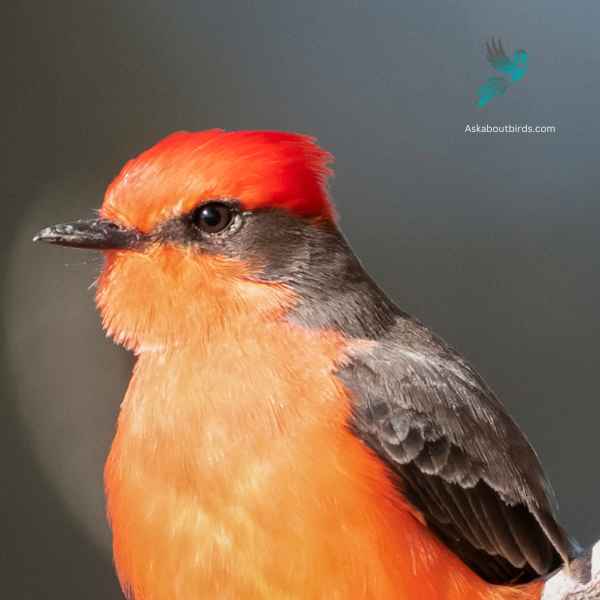

| Feature | Measurement |
|---|---|
| Scientific Name | Pyrocephalus obscurus |
| Length | 5.1–5.5 in |
| Wingspan | 9.4 to 9.8 in |
| Weight | 11 to 14 g |
The Vermilion Flycatcher is a small and colorful bird native to the Americas. The male Vermilion Flycatcher is a striking sight, displaying a vibrant red plumage on its head, breast, and underparts, contrasting with its brown wings and black tail below. Females, on the other hand, have more muted colors, featuring a pale yellowish belly and grayish-brown upperparts.
Vermilion Flycatchers are known for their lively and acrobatic flight displays, which they perform during courtship or to defend their territories. They often sing a series of soft, whistled notes while engaged in these aerial displays. They construct cup-shaped nests, usually in shrubs or low trees, where females lay their eggs and raise their young.
Painted Bunting
| Scientific Name | Length | Wingspan | Weight |
|---|---|---|---|
| Passerina ciris | 5.5 in | 8.7 in | 0.5-0.7 oz |
The Painted Bunting is one of North America’s most dazzling birds, celebrated for its vibrant and multi-colored plumage.
Appearance: This striking songbird showcases a kaleidoscope of colors. Males are particularly vibrant, boasting a bright blue head, red underparts, and a green back. Females, on the other hand, are primarily greenish-yellow with a slightly paler belly.
Diet: Painted Buntings predominantly feed on seeds, especially those of grasses. During the breeding season, they also consume a substantial amount of insects, which provide necessary proteins for their young.
Reproduction: Painted Buntings usually build their nests close to the ground, well-hidden among dense shrubs or grasses. Females lay a clutch of 3 to 4 eggs, which are incubated for about 11 to 12 days before hatching.
Pyrrhuloxia

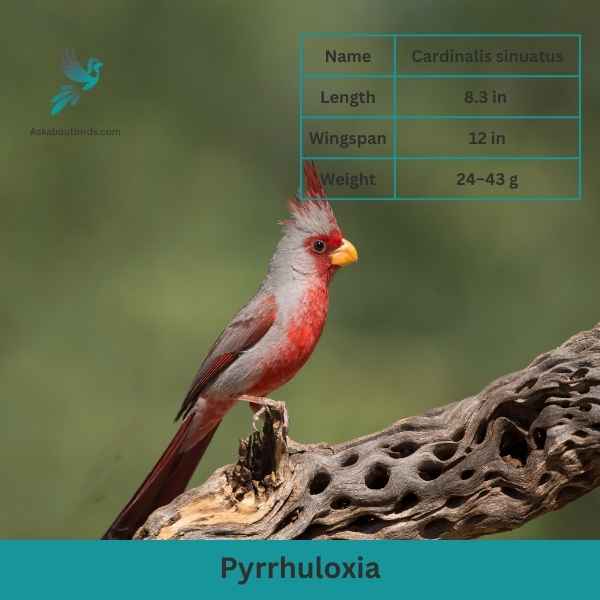
| Feature | Measurement |
|---|---|
| Scientific Name | Cardinalis sinuatus |
| Length | 8.3 in |
| Wingspan | 12 in |
| Weight | 24–43 g |
The Pyrrhuloxia, also known as the Desert Cardinal, is a medium-sized songbird native to the southwestern United States and northern Mexico. It is closely related to the Northern Cardinal but possesses its own unique characteristics. The Pyrrhuloxia is named after its vibrant red crest and mask-like face markings, similar to that of the Northern Cardinal. However, its overall coloration is more muted, with a grayish body and reddish wings and tail.
Pyrrhuloxias are known for their distinct vocalizations, which include a variety of songs and calls. Males often sing from elevated perches to defend their territories and attract mates. They also engage in aggressive displays to establish dominance.
Hepatic Tanager
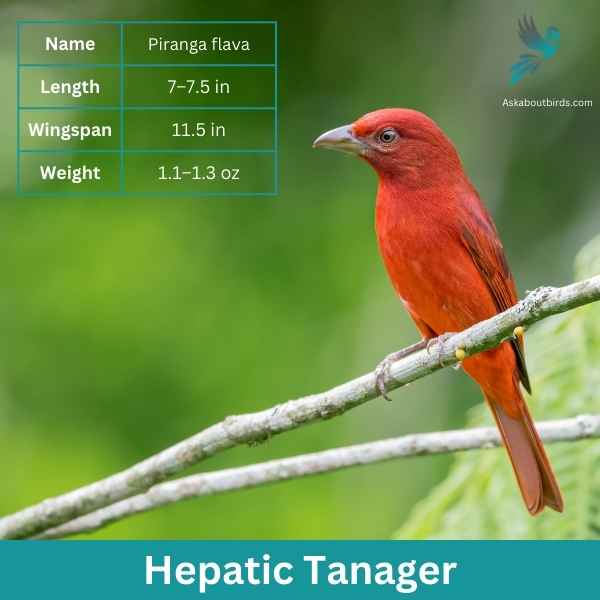
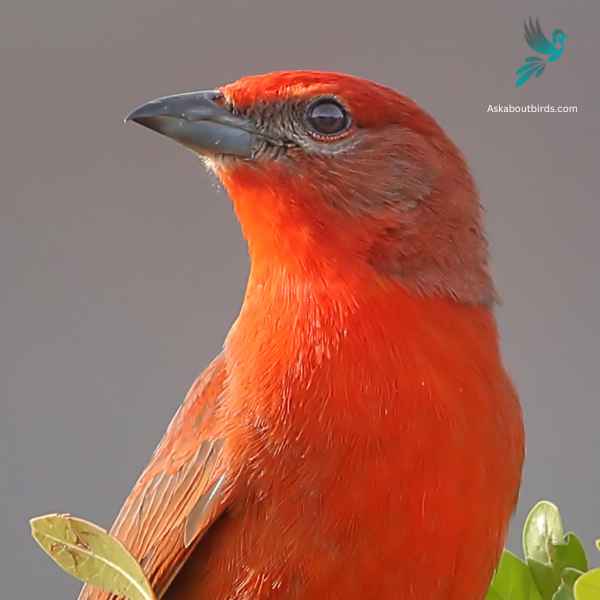
| Feature | Measurement |
|---|---|
| Scientific Name | Piranga flava |
| Length | 7–7.5 in |
| Wingspan | 11.5 in |
| Weight | 1.1–1.3 oz |
The Hepatic Tanager is a robust and brightly colored songbird found primarily in pine-oak woodlands of the American Southwest and Mexico.
Appearance: Male Hepatic Tanagers are a rich reddish-brown or “liver” color, from which they get their name (hepatic means liver-colored). Their wings and tail are more dusky, while females are a more muted yellow-orange, with a gray back and wings. Both sexes have a stout, pointed bill.
Diet: These tanagers primarily eat insects, but they also consume a fair amount of fruit and berries. They often forage by perching quietly and then making short flights to capture prey or pluck fruit.
Reproduction: Hepatic Tanagers nest in trees, often in a concealed location such as a dense clump of needles in a pine tree. The nest is a shallow cup made of twigs, grass, and pine needles. The female typically lays a clutch of 3 to 4 pale blue or greenish eggs. Both parents share feeding duties once the eggs hatch.
Red Crossbill
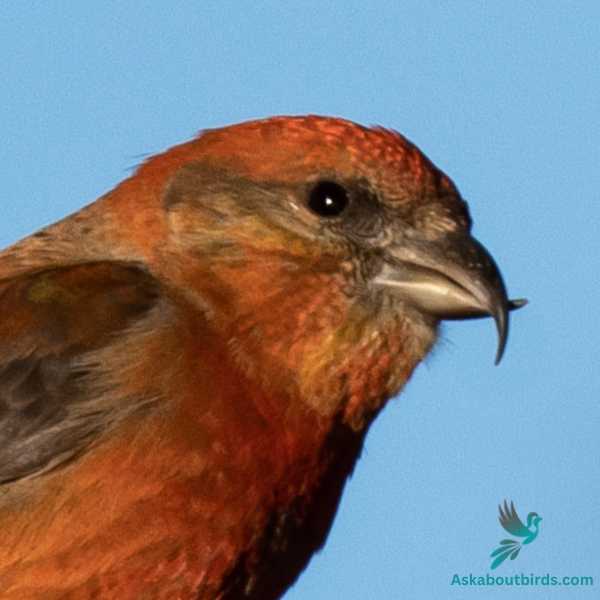

| Feature | Measurement |
|---|---|
| Scientific Name | Loxia curvirostra |
| Length | 20 cm |
| Wingspan | 27–29 cm |
| Weight | 40-53 g |
The Red Crossbill is a peculiar bird species, celebrated for its unique beak structure and vibrant coloration.
Appearance: Red Crossbills are named for their distinctive crossed mandibles, which are adapted to extracting seeds from conifer cones. Male Red Crossbills are usually bright red or orange, while females and juveniles are greenish-yellow. All have dark wings and notched tails.
Diet: The diet of the Red Crossbill is primarily composed of conifer seeds, their unique beak allowing them to access these seeds with ease. This diet includes seeds from pine, spruce, and other types of coniferous trees. They are also known to consume some insects.
Reproduction: Red Crossbills are known for their flexible breeding season, which can occur any time of the year when there is an abundance of food. They typically nest in conifers, where the female lays a clutch of 3 to 4 eggs.
House Finch


| Feature | Measurement |
|---|---|
| Scientific Name | Haemorhous mexicanus |
| Length | 5–6 in |
| Wingspan | 8–10 in |
| Weight | 0.6–0.9 oz |
The House Finch is a small songbird widely distributed across North America and is commonly found in urban and suburban areas.
Appearance: Males of this species are brightly colored with crimson faces and throats, which can extend to the chest and back, while their flanks have streaks. The female is streaked brown and lacks the red coloring. Both have a square-tipped tail and a distinctively long, flat-topped bill.
Diet: House Finches primarily eat seeds, grains, and berries. They have a particular fondness for sunflower seeds and can be commonly seen at bird feeders. Occasionally, they will also consume insects, especially during the breeding season.
Reproduction: House Finches are cavity-nesters and might choose ledges, vents, ledges, and other urban settings. They might also utilize trees or shrubs. Their nests can be made of a wide array of materials, from feathers to twigs.
Red-Winged Blackbird
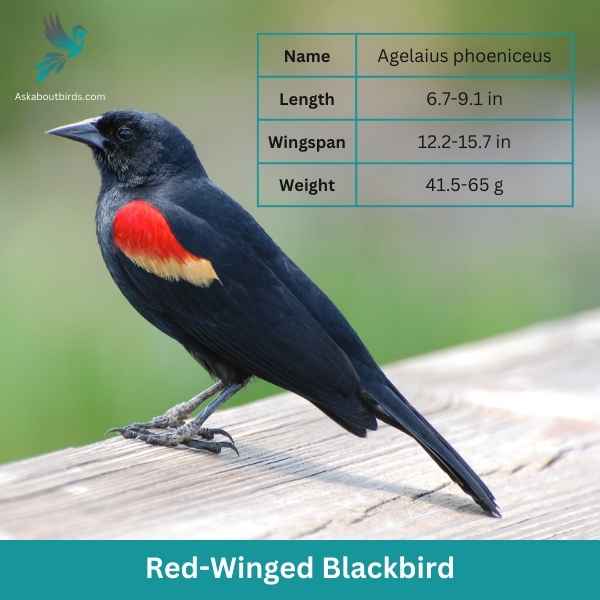
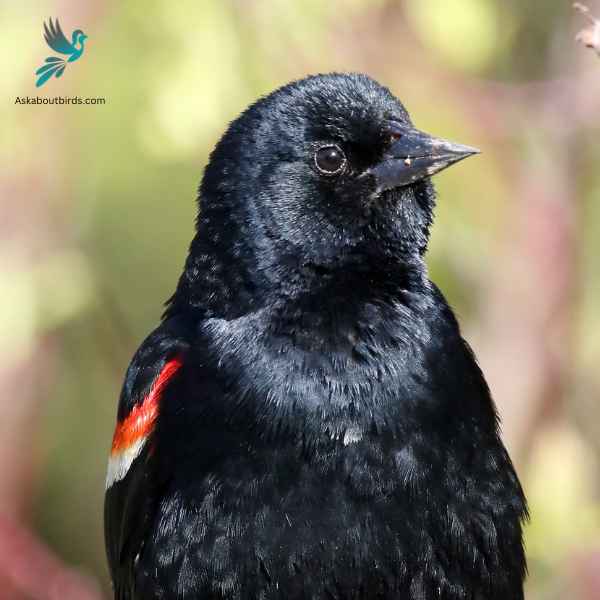
| Feature | Measurement |
|---|---|
| Scientific Name | Agelaius phoeniceus |
| Length | 6.7-9.1 in |
| Wingspan | 12.2-15.7 in |
| Weight | 41.5-65 g |
The Red-Winged Blackbird is a familiar sight across North America, especially in wetlands and open areas. Known for its striking coloration and distinct call, it is often seen perched on cattails or utility lines.
Appearance: Male Red-Winged Blackbirds are glossy black with bright red-and-yellow shoulder patches, while females are streaky brown, resembling a large sparrow. The males’ red patches become more prominent when they’re displaying or agitated.
Diet: Red-Winged Blackbirds primarily feed on seeds and insects. Their diet includes grains, sunflower seeds, and corn, but they also eat beetles, caterpillars, and other small invertebrates, especially in the breeding season.
Reproduction: Red-Winged Blackbirds nest in marshes, along watercourses, and in wet fields. The female constructs a cup-shaped nest using grass and sedge, attaching it to plants above water. She typically lays a clutch of 3 to 4 blue-green eggs, which she incubates for about 11-12 days. Males, being polygynous, often have multiple mates during a single breeding season.
Common Redpoll

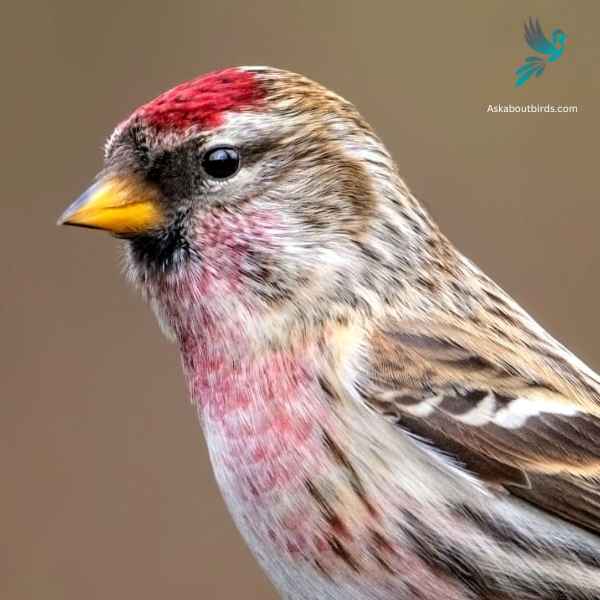
| Feature | Measurement |
|---|---|
| Scientific Name | Acanthis flammea |
| Length | 5.0-5.5 in |
| Wingspan | 7.5-8.5 in |
| Weight | 0.4-0.9 oz |
The Common Redpoll is a small songbird that is easily identifiable by its rosy-red forehead, black chin, and often fluttering flight pattern.
Appearance: Common Redpolls exhibit a distinctive rosy-red forehead patch and black chin. The males typically have a more extensive pink wash on their chest and face than females. The rest of their body is primarily streaked brown and white, with two white wing bars and a notched tail.
Diet: The diet of the Common Redpoll predominantly consists of seeds, particularly from birches and alders. They have a specialized throat pouch where they can temporarily store seeds, allowing them to consume them later in a more sheltered location.
Reproduction: Common Redpolls nest in shrubs or on the ground, using grasses, twigs, and feathers for construction. The female is responsible for the majority of the incubation and typically lays a clutch of 4 to 6 eggs. After the eggs hatch, both parents take part in feeding the young.
Rufous-crowned Sparrow
| Scientific Name | Length | Wingspan | Weight |
|---|---|---|---|
| Aimophila ruficeps | 5.5 in | 8.3 in | 0.7-0.9 oz |
The Rufous-crowned Sparrow is a modest yet striking songbird known for its distinct rufous crown and habit of flitting about dry, rocky habitats.
Appearance: Exhibiting a deep rufous crown and gray face, this sparrow stands out against its habitat. It has a streaked back and two distinct white wing bars, complemented by an unmarked grayish underbelly.
Diet: Primarily insectivorous during the breeding season, the Rufous-crowned Sparrow switches to seeds, especially grass seeds, during other times of the year. This diet change ensures it gets the necessary nutrients during respective seasons.
Reproduction: The Rufous-crowned Sparrow tends to nest on the ground, concealed by tufts of grass or sheltered by rocks. Nests are typically well-hidden, and the female usually lays a clutch of 2 to 4 eggs. The incubation period lasts about 11 to 14 days.
Scarlet Tanager


| Feature | Measurement |
|---|---|
| Scientific Name | Piranga olivacea |
| Length | 6.3 to 7.5 in |
| Wingspan | 9.8 to 11.8 in |
| Weight | 23.5 to 38 g |
The Scarlet Tanager is a strikingly colorful bird known for its brilliant plumage and distinctive song.
Appearance: Male Scarlet Tanagers are notable for their vibrant scarlet bodies contrasted with black wings and tail, making them one of the most intensely colored birds. Females and juveniles, on the other hand, have a subdued olive-yellow body color with darker wings and tail.
Diet: The diet of the Scarlet Tanager is largely made up of insects, including beetles, cicadas, aphids, and others. They are adept flycatchers, seizing insects in mid-air or picking them off foliage. They also consume fruits and berries, especially during migration and in their winter habitats.
Reproduction: The female Scarlet Tanager builds a cup-shaped nest using twigs, rootlets, and grass, typically well-hidden in the dense foliage of trees. She lays 3 to 5 eggs and incubates them for about two weeks.
Red-headed Woodpecker

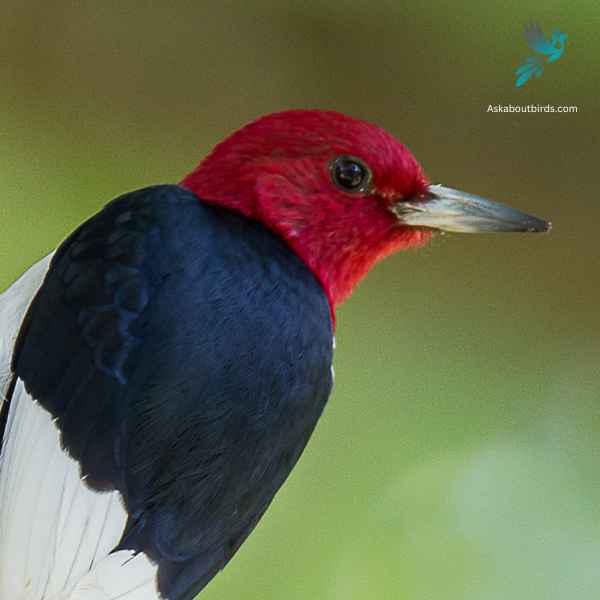
| Feature | Measurement |
|---|---|
| Scientific Name | Melanerpes erythrocephalus |
| Length | 7.5–9.1 in |
| Wingspan | 16.5 in |
| Weight | 2.0–3.2 oz |
The Red-headed Woodpecker is a striking forest bird with a bold tri-colored pattern.
Appearance: This woodpecker features a completely red head and neck, contrasting starkly with its white underparts and black wings. Its wings also have large white patches which are conspicuous in flight.
Diet: Red-headed Woodpeckers have a varied diet including insects, seeds, fruits, berries, and occasionally even the eggs of other birds. They’re also known to store food by wedging it into crevices in bark.
Reproduction: These woodpeckers nest in cavities which they excavate in dead wood or dead parts of live trees. These cavities can be found anywhere from 2 to 80 feet off the ground.
Pine Grosbeak

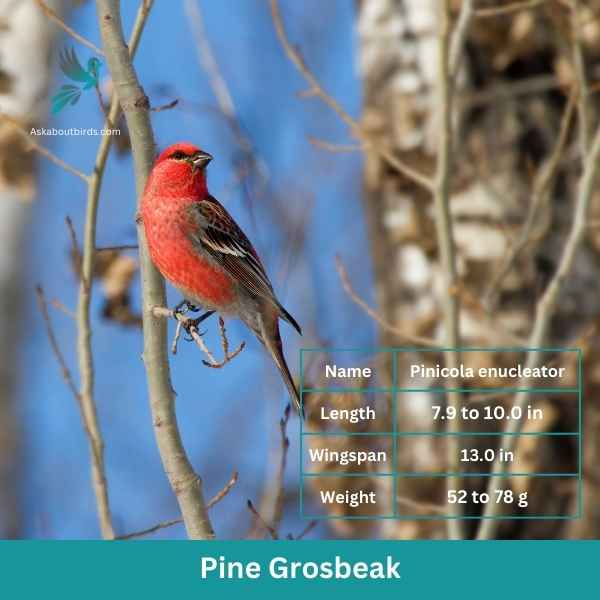
| Feature | Measurement |
|---|---|
| Scientific Name | Pinicola enucleator |
| Length | 7.9 to 10.0 in |
| Wingspan | 13.0 in |
| Weight | 52 to 78 g |
The Pine Grosbeak is a striking bird native to the northern regions of North America, often found in coniferous forests. Both males and females have a plump and robust body with a large beak adapted for eating seeds. The male Pine Grosbeak displays a vibrant reddish-pink plumage, while the female has a more subdued grayish-brown coloration.
These birds are typically seen in small flocks, foraging for food in trees and on the ground. They have a preference for seeds, particularly those from various conifer species. The Pine Grosbeak uses its strong bill to crack open the cones of tall trees and extract the seeds, but they also consume berries and small fruits when available.
Where to Spot Texas’ Red Birds
In the heart of the Lone Star State, a birder’s paradise awaits. Discover the top locales in Texas that have garnered acclaim for their unmatched avian diversity, especially when it comes to spotting radiant red birds.
- High Island: Situated on the Gulf Coast, High Island is renowned as a migration hotspot, particularly during spring. Its unique combination of coastal and woodland habitats attracts a myriad of bird species, including vibrant tanagers and buntings.
- Big Bend National Park: Nestled along the Rio Grande, this park boasts a mix of desert, mountain, and river environments. Here, birders can seek out species like the Vermilion Flycatcher against a backdrop of breathtaking landscapes.
- Aransas National Wildlife Refuge: As a crucial wintering site for the rare Whooping Crane, this refuge on the central Texas coast also hosts a variety of waders, songbirds, and red-hued species like the Reddish Egret.
- South Padre Island: A celebrated birding destination year-round, its birding centers and boardwalks provide close-up views of species such as the Scarlet Tanager and Summer Tanager, especially during migration peaks.
- Attwater Prairie Chicken National Wildlife Refuge: Beyond its namesake bird, this refuge is a haven for grassland species. Its expansive prairies and wetlands also make it a magnet for a wide range of migratory birds, including various red-toned sparrows and finches.
| State’s Red Birds | Top Spots for Red Birds |
|---|---|
| Arkansas’s Red birds | 1. Hot Springs National Park 2. Holla Bend National Wildlife Refuge 3. Ouachita National Forest |
| Louisiana’s Red birds | 1. Atchafalaya National Wildlife Refuge 2. Jean Lafitte National Historical Park and Preserve 3. Sabine National Wildlife Refuge |
| New Mexico’s Red birds | 1. Bosque del Apache National Wildlife Refuge 2. Valles Caldera National Preserve 3. Río Grande del Norte National Monument |
| Oklahoma’s Red birds | 1. Wichita Mountains Wildlife Refuge 2. Ouachita National Forest (extends into Oklahoma) 3. Salt Plains National Wildlife Refuge |
FAQs on Red Bird Species Found in Texas
Why are bright red birds like the vermillion flycatcher more prevalent in Central and South America?
Bright red birds, especially species like the vermillion flycatcher, are commonly associated with Central and South America. These vibrant birds often inhabit the forest canopy and forest edges of Central America, showcasing their brilliant bright red feathers against the lush green backdrop. Such plumage not only makes them one of the most beautiful birds in the region but also helps them attract mates during spring migration.
How does the habitat of the red-bellied woodpecker differ from the purple finch in Central America?
While Central America houses diverse bird species, the red-bellied woodpecker and the purple finch present distinct habitat preferences. The red-bellied woodpecker, with its black and white body, red crown, and sharp brown crest, primarily inhabits pine or oak woodlands. In contrast, the purple finch, known for its bright red feathers, is more inclined towards the forest edges, especially near berry bushes and fruit trees.
Are black oil sunflower seeds a preferred diet for red birds in Central America?
In Central America, while few birds like the purple finch have a penchant for black oil sunflower seeds, many red birds, characterized by their bright red plumage, have a varied diet. These birds, from the vibrant vermillion flycatcher to those with a rosy pink head or brilliant red head, often rely on insects, fruit from berry bushes, and seeds from other plants. However, planting berry plants can attract these beautiful birds to backyard settings.
Do red-breasted birds in Central America engage in migratory patterns?
Certainly, many red-breasted birds, especially those with vibrant bright red feathers, engage in migratory patterns in Central America. Birds such as the flame-colored tanager, known for its bright red plumage and green wings, undertake journeys across mountain ranges and forest canopies during certain seasons. Migration helps these forest songbirds access varied food sources and suitable breeding habitats.

